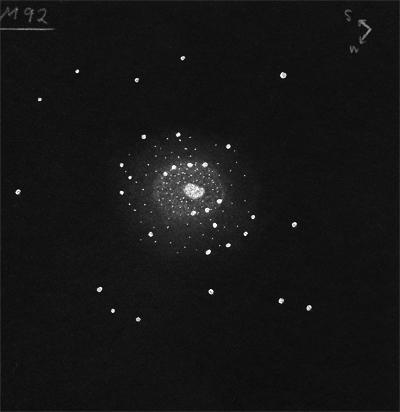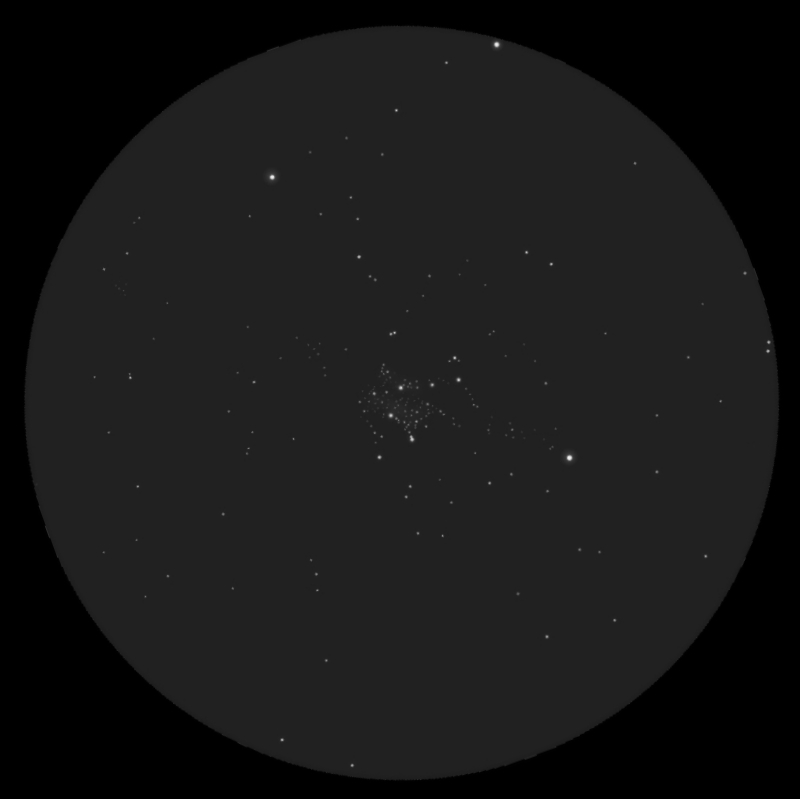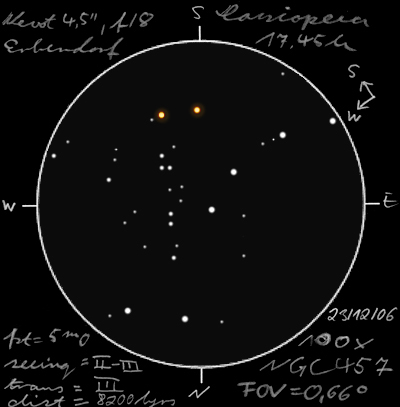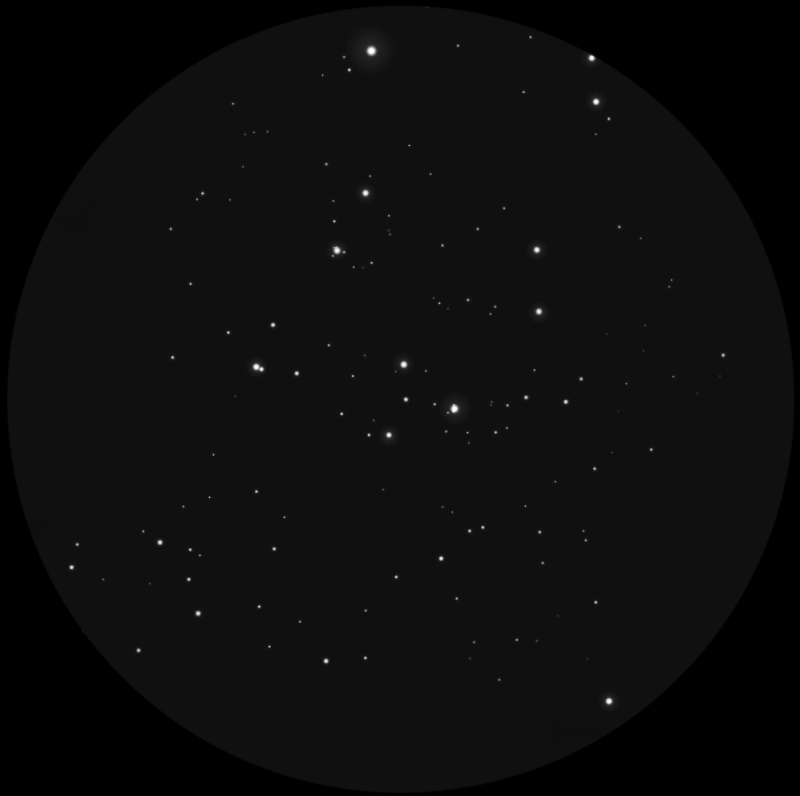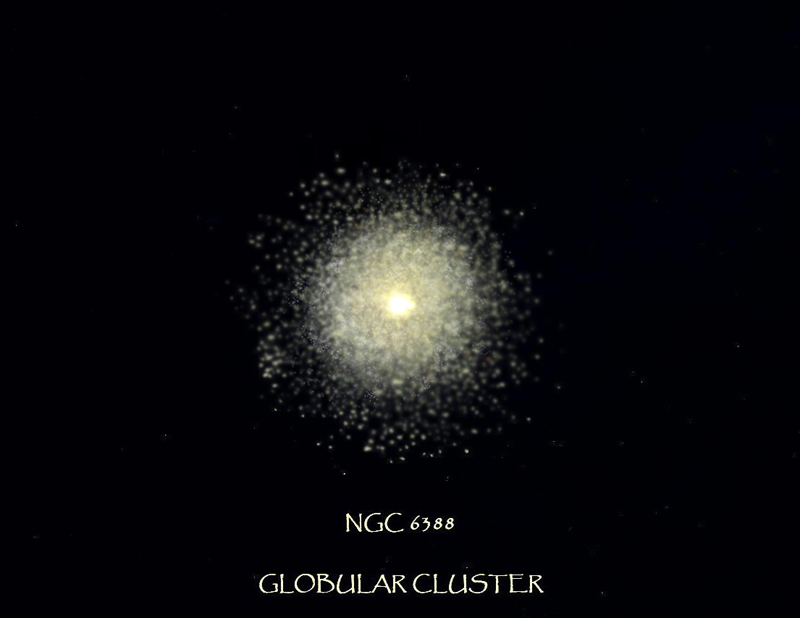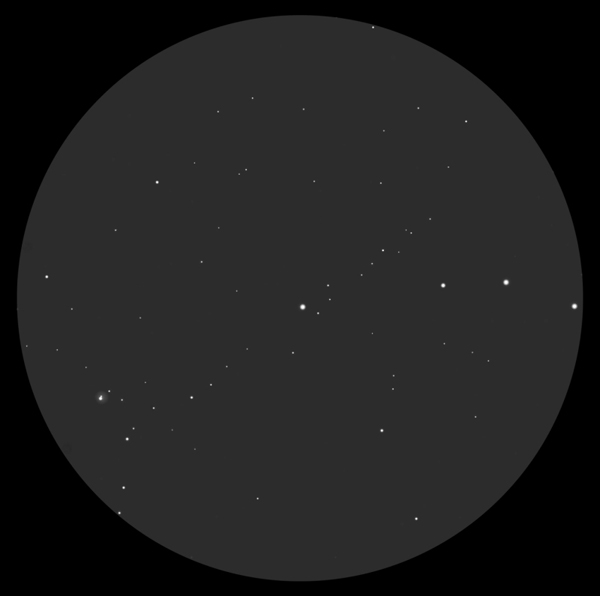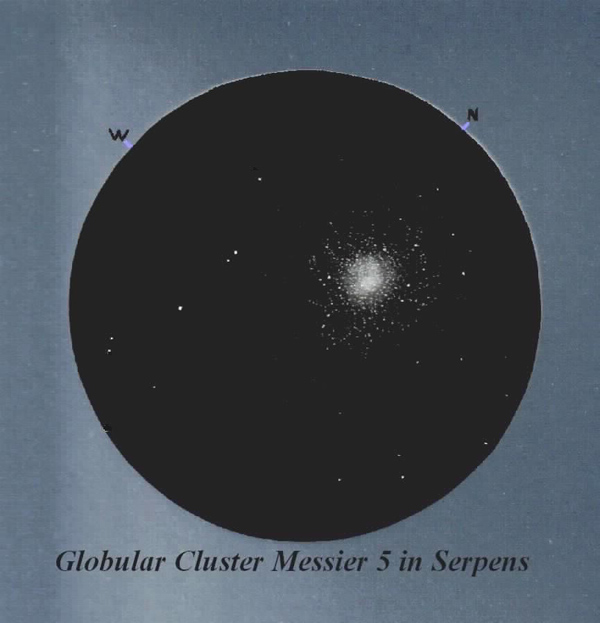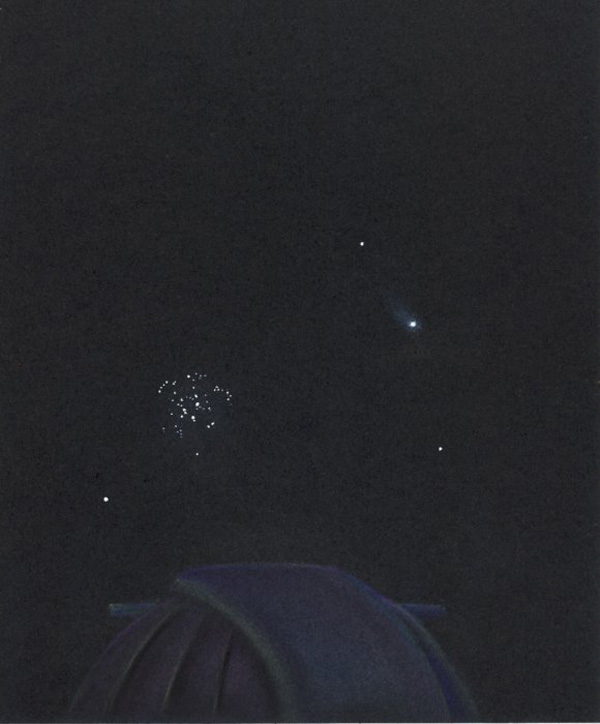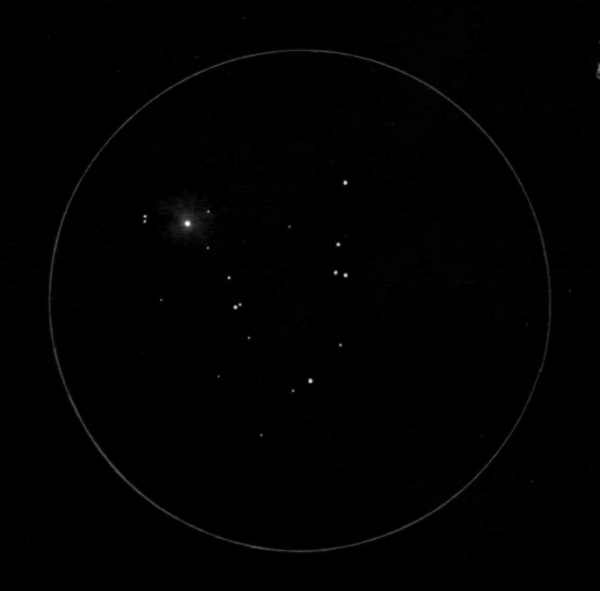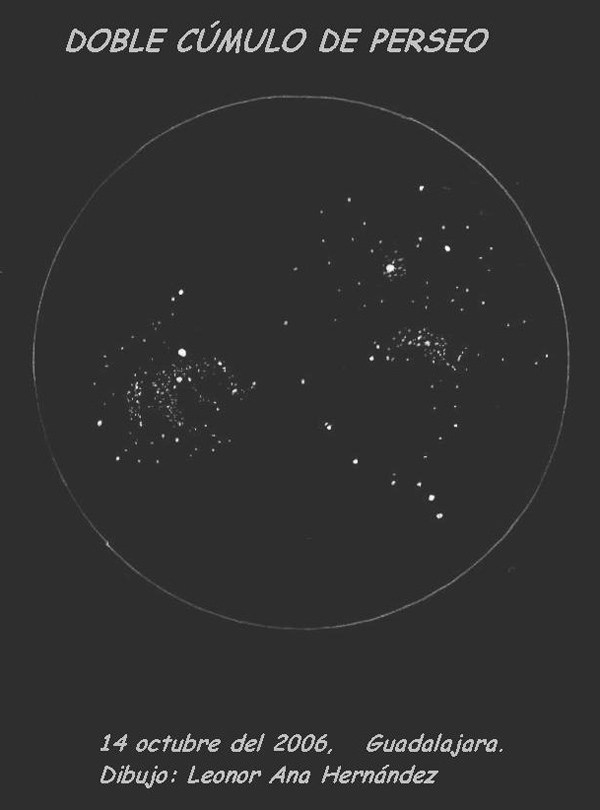Messier 92: Globular Cluster
And yet, another one of those Globs – don’t worry, there are plenty, 29
in the Messier Catalog alone, but I am slowly pulling through, one more
down on the list and counting. All in all, I’d say: again not bad, measured
up to the years of life it cost me to draw it. You sit there at the telescope,
frozen to the spot in a never-ending struggle to decide, whether you’ve
seen the detail or not, whether you should draw it or not, your hands are
getting cold, your neck is getting stiff and the cluster simply keeps refusing
to turn out the way you want it or see it. Well, the longest journey comes to
an end, so here it is: M 92! I like to call it The Lost Treasure of Hercules,
because it is a great view, yet often overlooked due to its proximity to the
far more well-known M 13. Maybe next time you visit the area, remember to
make a little stop-over at M 92.
Date: April 15, 2007
Location: Kegelhaus, Erbendorf, Bavaria, Germany
Instrument: Dobsonian 8″ f/6
Constellation: Hercules
Seeing: II of VI
Transparency: I-II of VI
NELM: 6m2
Magnification: 133x
Technique: white pastel pens and white ink-pen on black cardboard
Sebastian Lehner

